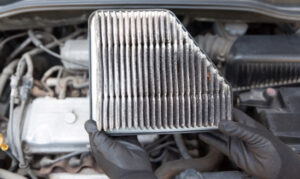AGM batteries, also known as absorbed glass mat batteries, are a type of lead-acid battery that have become increasingly popular in recent years. They are designed to offer the best of both worlds by combining the advantages of traditional flooded lead-acid batteries with the maintenance-free operation of sealed lead-acid batteries.
Purpose and Importance
The main purpose of AGM batteries is to provide reliable and efficient energy storage for a wide range of applications. They are commonly used in automotive, marine, solar, and backup power systems. The importance of AGM batteries lies in their ability to deliver high performance, long service life, and minimal maintenance requirements, making them ideal for use in a variety of settings where power is needed and downtime is not an option.
Benefits
One of the major benefits of AGM batteries is their high energy density. This means that they can store a large amount of energy in a relatively small space, making them ideal for use in confined areas or applications where space is limited. They also have a low internal resistance, which allows them to deliver high currents when required. Additionally, they are completely sealed and maintenance-free, meaning that they do not require any water addition and can be used in any position.
AGM batteries are also known for their high reliability and long service life. They are designed to withstand a wide range of temperatures and are resistant to vibration and shock. They also have a low self-discharge rate, which means that they can retain their charge for long periods of time, making them ideal for use in applications where the battery may not be used regularly.
How to Use
AGM batteries are relatively easy to use and require minimal maintenance. They can be charged using a variety of charging sources, including alternators, solar panels, and battery chargers. It is important to use a charger that is specifically designed for lead-acid batteries and to follow the manufacturer’s instructions for charging and maintaining the battery. It is recommended to always follow the instruction manual of the particular battery brand.
When using an AGM battery, it is important to be aware of its voltage range. Overcharging or undercharging the battery can damage it and reduce its service life. It is also important to avoid deep discharging the battery, as this can also damage it. In general, it is best to keep the battery’s charge level between 50% and 80% for optimal performance and service life.
Precautions
AGM batteries should be handled with care, as they contain lead and acid. it is important to wear gloves and safety goggles when handling them. They should be stored in a cool, dry place, and kept away from open flames or sparks. They should also be kept away from children and pets.
It is also important to note that AGM batteries are sensitive to overcharging, which can damage the battery and reduce its service life. Overcharging can be caused by using a charger that is not specifically designed for lead-acid batteries, or by leaving the battery connected to a charger for too long. To prevent overcharging, it is important to use a charger that is designed for use with AGM batteries and to follow the manufacturer’s instructions for charging and maintaining the battery.
Invented
The AGM battery technology was first introduced in the 1970s, it was developed by engineers who were looking for a way to improve the performance and reliability of traditional flooded lead-acid batteries while reducing the maintenance requirements. AGM batteries were created by sandwiching a glass mat between the lead plates to absorb the electrolyte, which resulted in a battery that was sealed and maintenance-free.
Other Types
There are other type of batteries that are similiar to AGM, such as Gel batteries, also known as gel cell batteries, are another type of sealed lead-acid battery. Like AGM batteries, they are maintenance-free and sealed, but they use a gelified electrolyte instead of an absorbed glass mat. The gel electrolyte is thicker and more viscous than the liquid electrolyte used in flooded lead-acid batteries, making it less likely to leak or spill.
Another type of battery similar to AGM is the VRLA battery (Valve Regulated Lead-Acid battery) which is also a sealed, maintenance-free type of battery.
VRLA batteries are similar to AGM batteries in many ways, but they use a different method of gas recombination. In VRLA batteries, a valve allows the escape of gases generated during charging, but prevents the leakage of electrolyte. This allows for a sealed and maintenance-free operation.
In summary, AGM batteries offer many benefits over traditional flooded lead-acid batteries, including high energy density, low internal resistance, and minimal maintenance requirements. They are a popular choice for use in a wide range of applications, including automotive, marine, solar, and backup power systems. Gel and VRLA batteries also offer similar benefits and also are sealed, maintenance-free alternatives. However, AGM batteries are known to be a bit more robust in terms of overcharging and deep discharging compared to Gel batteries, and VRLA batteries have a lower risk of leakage. When choosing the right battery type, it is important to consider the specific requirements of the application and to consult with a battery expert to ensure the best fit.










